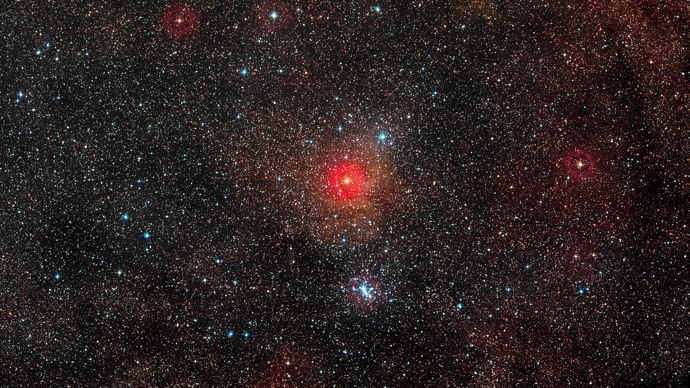1,300 times bigger than Sun: Largest yellow ‘hyper-giant’ star identified

Astronomers have identified the largest ‘yellow’ star ever observed in our galaxy and one of the 10 largest ever discovered in total. The star is more than 1,300 times the diameter of the sun and 1,000,000 times brighter.
The star named HR 5171 A is 12,000 light-years from Earth and can
even be seen with the naked eye. It was discovered by an
international team of scientists using the European Space
Organization’s Very Large Telescope Interferometer in Paranal,
Chile.
Yellow hypergiants are extremely rare; approximately a dozen are
known to exist in the Milky Way. In general, they are very
unstable because of the stage of their ‘life’. The most
well-known is Rho Cassiopeiae in the Cassiopeia constellation.
HR 5171 A is also 50 times bigger than red supergiant Betelgeuse
in the Orion constellation.
The size of the star took the group of scientists by surprise,
given their earlier observations. The work of Olivier Chesneau
and his team is to be published in the journal Astronomy &
Astrophysics.
Astronomers made a further surprising discovery about the star.
“The new observations also showed that this star has a very
close binary partner, which was a real surprise,” said
Chesneau from the Observatoire de la Côte d’Azur in Nice,
France. “The two stars are so close that they touch and the
whole system resembles a gigantic peanut.”
HR 5171 A is orbited by this companion – which is slightly hotter
than the 5000 degrees Celsius (surface temperature) hypergiant –
every 1,300 days.
“The companion we have found is very significant as it can
have an influence on the fate of HR 5171 A, for example,
stripping off its outer layers and modifying its evolution,”
Chesneau said in a press release on the ESA’s website.
The process of discovery was made using a method called
interferometry, which collects and combines light from multiple
telescopes, creating one new massive telescope.
Researchers collated data from past decades, noting that the star
has been changing rapidly over the time period too. It has been
increasing in size over the past 40 years and cooling down as it
grows.














